You are here
Sieversii apple tree. Malus sieversii in Kazakhstan.
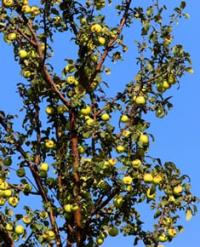
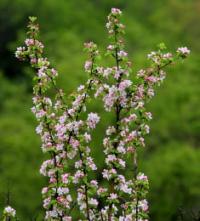
Wild apple tree species in Kazakhstan.
“The roots nest deep,
The peak rises high,
Green branches lead into the wide azure distance.
Roots nest deep in the ground,
he top rises to a high rock,
The green branches lead wide into the immeasurable blue altitude.”
Balmont K.D. “Slavic tree”.
Description of Sieversii apple tree in Kazakhstan.
Siversii apple tree (Malus sieversii) is a wild fruit species of foothill apple trees from Central Asia and Kazakhstan. The first description of this type of apple tree (1793) belongs to the botanist Johann Sievers, who encountered an apple forest in the valley of the Urjar River.
In Soviet times, this type of apple tree was studied for a long time by Academician of the National Academy of Sciences of Kazakhstan Aimak Dzhangaliev, who became the first head of the Institute of Fruit Growing and Viticulture of the Academy of Sciences of the Kazakh SSR.
There was even a film about him, “The Father of Apples - Aimak Dzhangaliev.” In 1792 - 1794, the first name for the apple tree appeared, which is still used today. Johann Sievers’s notes note that in the Tarbagatai Mountains he found apple trees with deep roots.
This apple tree has the ability, unusual for its family, to adapt to a wide variety of conditions. It prefers high temperatures, short winters and good moisture, but can grow in areas with long, frosty winters and can withstand dry climates.
The collected material was sent for processing to the famous K. Ledebour, who named the apple tree in honor of the discoverer. The Sieversii apple tree is a deciduous tree, in favorable conditions reaching a height of 5 to 12 meters, externally very similar to many varieties of cultivated apple trees.
The pollen is heterogeneous in size, oval in shape when dry, and spherical when wet. The fruits have the maximum size among all types of wild apple trees and reach 7 cm in diameter, which is close to the size of the fruits of many varieties of domestic apple trees.
Unlike cultivated apple trees, the leaves of most Sievers apple trees turn red in the fall. The tree has the ability to reproduce vegetatively by basal shoots, and this occurs regardless of the state of the crown of the mother plant and depends mainly on the quality and moisture of the soil.
Currently, the species is considered threatened due to human economic activity in its habitat.
Russian-language synonyms apples in Central Asia.
Gissar apple tree.
Kyrgyz apple tree.
Kyrgyz apple tree.
Apple tree.
Apple peach tree.
Variegated apple tree.
Turkmen apple tree.
Tien-Shan apple tree.
Apple tree Shishkin.
Apple tree Yuzepchuk.
Malus anisophylla Sumnev.
Malus heterophylla Sumnev.
Malus hissarica Kudr.
Malus jarmolenkoi Poljak.
Malus juzepczukii Vassilcz.
Malus kirghisorum Al. Fed. &Fed.
Malus kudrjaschevii Sumnev.
Malus linczevskii Poljakov
Malus persicifolia (Popov) Sumnev.
Malus pumila var. persicifolia Popov.
Malus schischkinii Poljakov.
Malus sieversii ssp. hissarica (Kudr.) Likhonos.
Malus sieversii ssp. kirghisorum (Al. Fed. & Fed.) Likhonos.
Malus sieversii ssp. turkmenorum (Juz. & Popov) Likhonos.
Malus sylvestris ssp. sieversii (Ledeb.) Soo.
Malus tianschanica Sumnev.
Malus turkmenorum Juz. & Popov.
The following two mountain species are close to the Sieversii apple tree: Kyrgyz apple tree (Malus kirghisorum) and Malus niedzwetzkyana apple tree. According to DNA studies, the Sieversii apple tree is the ancestor of many modern varieties of domestic apple trees.
Another DNA analysis showed that the wild forest apple tree, along with the Sieversii apple tree, also made a significant contribution to the origin of the domestic apple tree. Wild thickets of the Sieversii apple tree are located in the Zhongar-Alatau National Park.
The pride of the Zhongar-Alatau National Natural Park is the wild Sieversii apple tree. This is where the largest amount of it grows in Kazakhstan. The main thing is that the Sieversii apple tree is recognized by researchers as the ancestor of all cultivated varieties of apples on earth.
In the XXIst century, the Sieversii apple tree is under threat of extinction due to anthropogenic impact.
Distributed along Malus sieversii the following mountain ranges in Kazakhstan (Dzhangaliev A.D., 1977).
Dzungarian Alatau - 48.8%;
Zailiiskiy Alatau - 25.4%;
Karatau - 12.1%;
Talas Alatau - 11.7%;
Tarbagatai - 2%.
Thus, on the territory of Kazakhstan, about 75% of Sivers apple groves are concentrated mainly in the Trans-Ili and Dzungarian Alatau. In 1992, according to M. M. Isin, the area of apple groves was about 11,000 hectares.
Since then it has decreased greatly. The main problem is illegal deforestation in the foothills with a rapidly growing population, clearing space for livestock grazing or private development (especially in the vicinity of Almaty, whose population grew 2.4 times between 1959 and 1989 alone, between 1989 and in 2009 - by another 21%).
nother problem is cross-pollination with cultivated apple species. The fruits consist of 84 - 85% water, 6 - 16% sugars. They contain 0.15 - 1.5% acids, including mainly citric, malic and grape. Pectic substances 3.18%, nitrogen-containing substances 0.3%, fiber 1.21%, ash 0.42%.
The peel contains the coloring pigment quercetin and traces of essential oil, which gives the fruit its aroma. The seeds contain 0.6% amygdalin glucoside and 23 - 33 fatty edible oil. Contains vitamins A, B1, B2, ascorbic acid. The bark contains up to 7% tannins.
The bast contains coloring substances. Dried leaves were used as a tea substitute. The fruits are valuable food for pigs. In Kazakhstan, the Sievers apple tree was used as a rootstock for cultivated varieties. Honey plant.
Bees collect nectar and pollen. Productivity with continuous growth is 20 kg/ha.
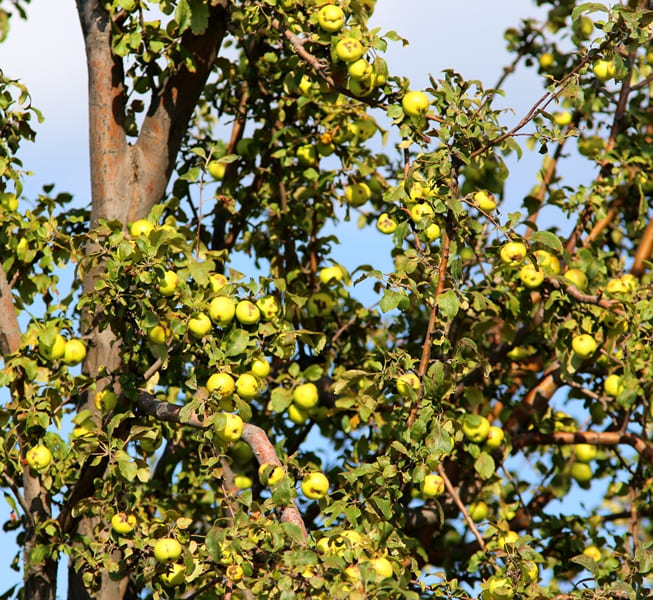
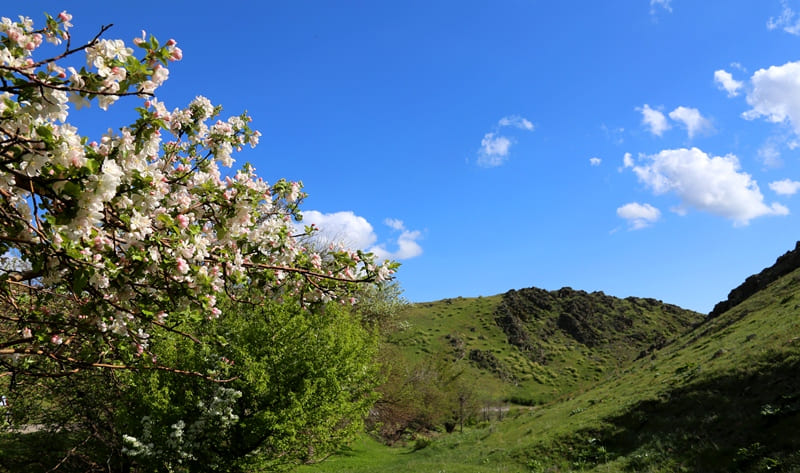
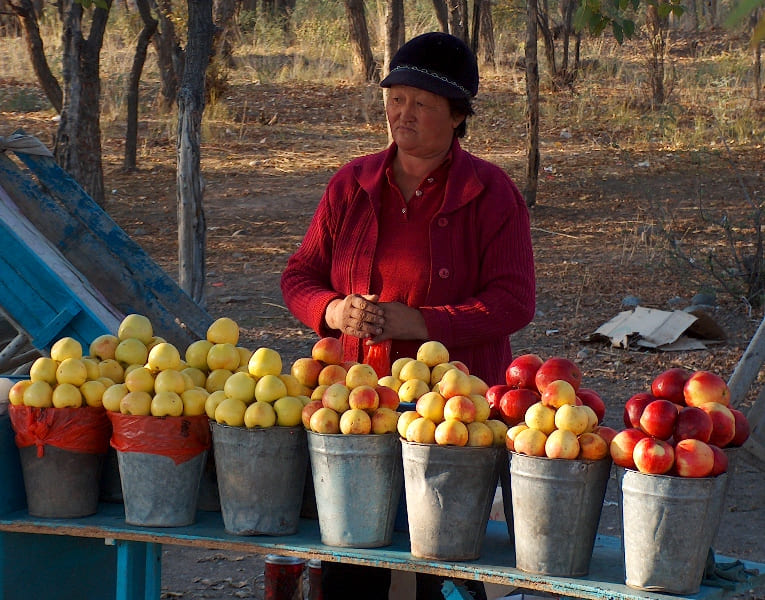
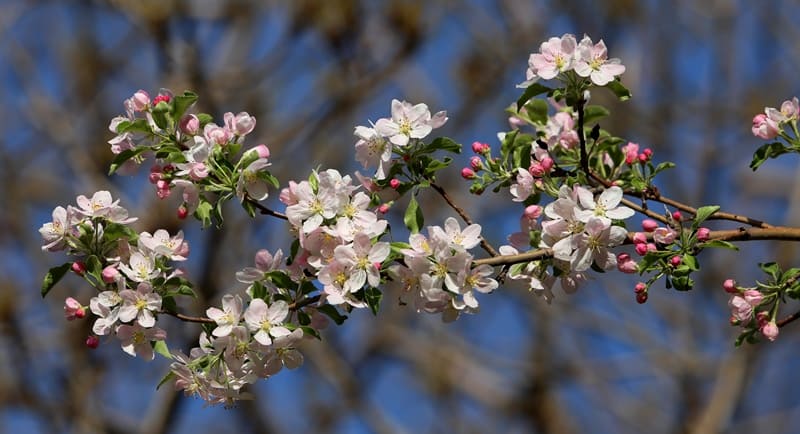
Photos by
Alexander Petrov.







